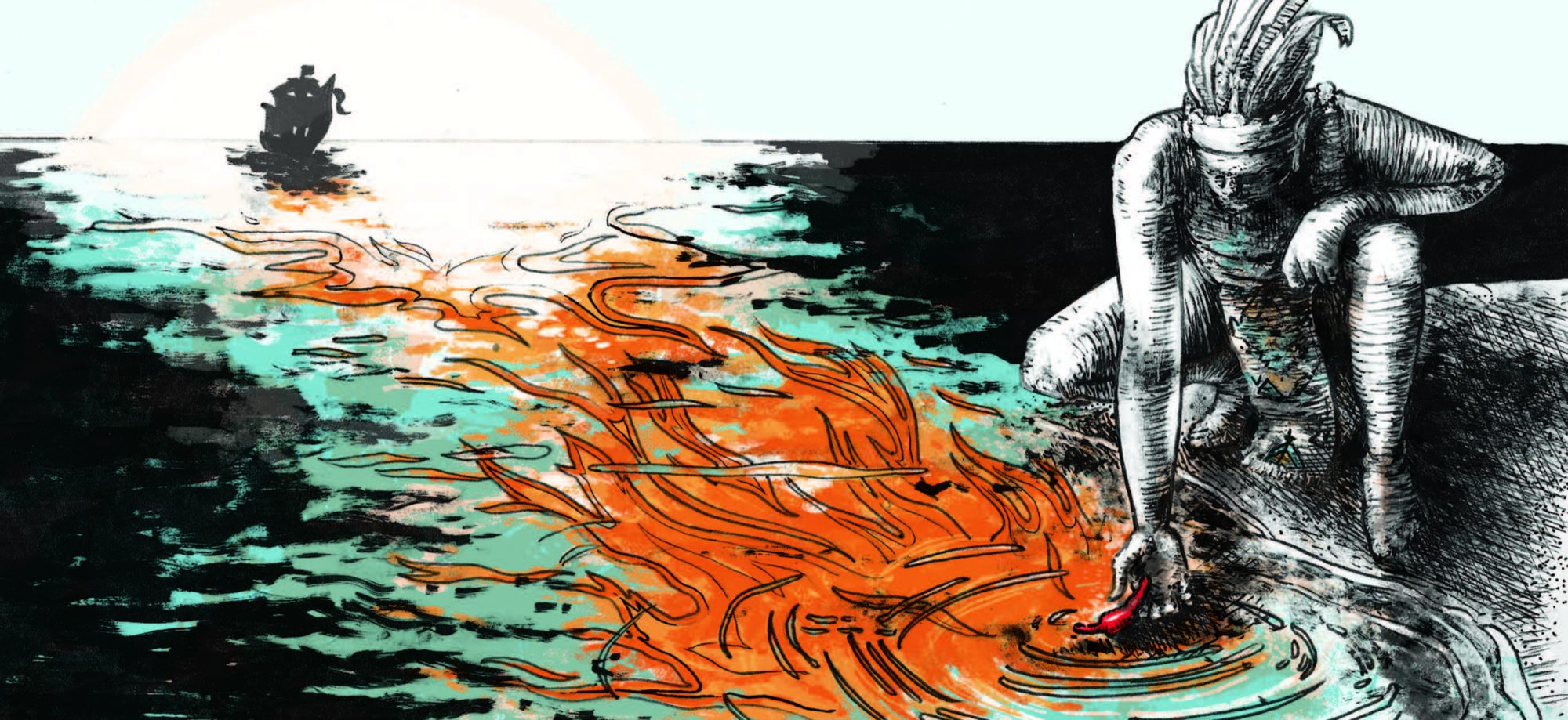In 1510, the Spanish become the first Europeans to inhabit Jamaica. African slaves are brought to the Caribbean to work the sugar cane plantations. The Africans introduce a variety of crops to the inhabitants, including peppers. Though not well documented, the now popular “jerk” cooking method is likely the result of the blending of African spices and Arawak food preparation techniques.
Stop 4: A Yah Mi Deh, 4435 118 Ave.
Try the jerk dishes, a house specialty of pork, or chicken basted in a fiery mop of Scotch bonnet peppers, thyme, allspice, clove, garlic, onions and the chef’s secret ingredients. A more adventurous Jamaican dish is the rich and spicy oxtail (beef) stew.
In 1498, Portuguese explorer Vasco da Gama lands on the western coast of India and sets up a settlement in the Indian state of Goa. As the Europeans move eastward across the Indian Ocean, spices, such as black pepper and cinnamon, are used as a trading currency. Twenty-one years later, Spanish navigator Ferdinand Magellan reaches the Philippines and northern Indonesia, which establishes a new commercial trade route to Asia. It’s believed the pepper is introduced to Asia around the 16th century by European explorers.
Stop 5: Guru, 17021 100 Ave.
Try the spicy lamb vindaloo, boneless chunks of lamb and potato cooked in throat-tingling sauce, which includes chili powder, cardamom, cloves and tomatoes. Cool down your mouth with a mango lassi, a thick and creamy drink made from mango and yogurt.
Stop 6: Thai Valley Grill, 4211 106 St.
Try the tom yum soup, a spicy and sour soup made with chilies, lemon grass, galangal and kaffir lime leaves. The stars, though, are the curry dishes, such as the geang kiew waan, a green curry made from a green pepper paste and coconut cream.
Like this content? Get more delivered right to your inbox with Ed. Eats
A list of what’s delicious, delectable and delightful.
